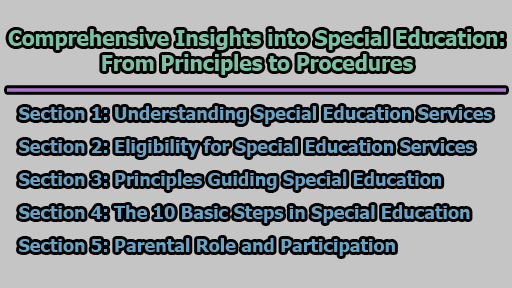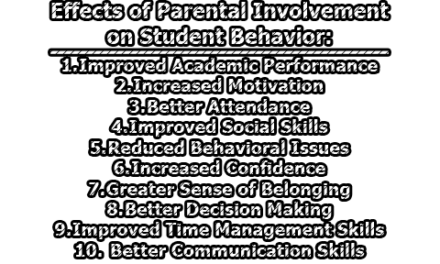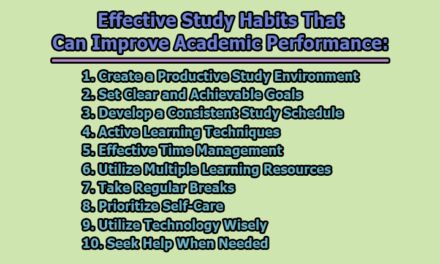Comprehensive Insights into Special Education: From Principles to Procedures
Special Education is a crucial facet of the educational system, ensuring that students with exceptional learning needs receive the support necessary for their academic success. Governed by federal law, particularly the Individuals with Disabilities Education Act (IDEA), special education is designed to provide specially tailored instruction at no cost to parents, meeting the unique requirements of children with disabilities. In the rest of this article, we will explore the comprehensive insights into special education: from principles to procedures.
Section 1: Understanding Special Education Services:
Special Education is a dynamic and indispensable component of the American education system, catering to the diverse learning needs of students facing exceptional challenges. At its core, special education is guided by the federal law known as the IDEA, a landmark legislation designed to ensure that children with disabilities have access to a free and appropriate public education.
1.1 Definition and Scope of Special Education: Special education, as defined by IDEA, entails the provision of specially designed instruction, at no cost to parents, to meet the unique needs of children with disabilities. This definition encapsulates a broad spectrum of conditions that may hinder a student’s ability to learn in a traditional educational setting.
1.2 Covered Disabilities: The scope of special education is expansive, encompassing various disabilities that necessitate tailored educational approaches. Among the disabilities covered by IDEA are:
- Intellectual disability: A condition characterized by limitations in intellectual functioning and adaptive behavior.
- Hearing impairments (including deafness): Challenges related to auditory perception, which may range from partial hearing loss to complete deafness.
- Speech or language impairments: Difficulties in communication, encompassing challenges in articulation, language comprehension, or fluency.
- Visual impairments (including blindness): Impairments that affect visual acuity, ranging from partial sight to complete blindness.
- Serious emotional disturbance: Conditions impacting emotional well-being and behavior, affecting a student’s ability to learn.
- Orthopedic impairments: Physical disabilities that affect movement or motor skills.
- Autism spectrum disorder: Neurodevelopmental disorders impacting social interaction, communication, and behavior.
- Traumatic brain injury: Injuries to the brain caused by external force, resulting in cognitive and functional impairments.
- Other health impairments: Various health conditions that may adversely affect a child’s educational performance.
- Specific learning disabilities: Conditions affecting the acquisition and use of listening, speaking, reading, writing, reasoning, or mathematical abilities.
- Developmental delay: Delays in physical, cognitive, communication, social, or emotional development.
Understanding the range of covered disabilities is fundamental to appreciating the complexity of special education services and the need for individualized approaches to meet each student’s distinctive needs.
Section 2: Eligibility for Special Education Services:
In the realm of special education, eligibility is a pivotal consideration, determining which students qualify for the specialized support and resources outlined in the IDEA. The eligibility criteria are stringent, aiming to ensure that services are directed towards those with genuine learning impediments that necessitate additional assistance.
2.1 Identification through Child Find: One primary avenue for identifying students who may need special education services is the Child Find system, a fundamental component mandated by IDEA. The Child Find initiative operates in every state, requiring educational authorities to actively seek, locate, and evaluate all children with disabilities who may require special education and related services.
The Child Find process involves systematic activities to identify children who may be in need of special education, ensuring that no child with a disability is overlooked. It encompasses outreach efforts, screenings, and assessments to identify students who may benefit from special education interventions.
2.2 Referral or Request for Evaluation: Another pathway to identifying students for special education services is through referrals or requests for evaluation. School professionals, including teachers and administrators, may initiate the process by suggesting that a child undergo evaluation to determine if they have a disability impacting their learning.
Equally important, parents play a vital role in this process. They have the right to request an evaluation if they suspect their child may have a disability. While such requests can be verbal, putting the request in writing is generally recommended for clarity and documentation purposes.
2.3 Parental Consent and Timelines: Regardless of whether identification occurs through Child Find or referral, parental consent is a prerequisite before a child can undergo evaluation. The federal IDEA regulations stipulate that evaluations need to be completed within 60 days after parental consent is granted. It’s worth noting that individual state regulations may provide different timelines, and in such cases, the state’s timeline takes precedence.
This emphasis on parental involvement and consent ensures that families are active participants in the decision-making process, aligning with the broader principles of inclusivity and collaboration outlined in IDEA.
Section 3: Principles Guiding Special Education:
The provision of special education services is guided by a set of principles embedded in federal law to ensure the equitable and effective education of students with disabilities. This section delves into the foundational principles outlined in the Individuals with Disabilities Education Act (IDEA), highlighting the core tenets that underpin the delivery of special education services.
3.1 Free and Appropriate Public Education (FAPE): At the heart of special education is the principle of Free and Appropriate Public Education (FAPE). This principle mandates that children with disabilities, aged 3 to 21, receive a public education at no cost to parents or guardians. The education provided must be tailored to meet the individual needs of each student, granting access to the general education curriculum and resulting in educational benefits.
3.2 Nondiscriminatory Identification and Evaluation: Ensuring fairness and impartiality, the principle of Nondiscriminatory Identification and Evaluation emphasizes the use of nonbiased methods and multiple approaches in identifying individuals with disabilities. Schools are required to avoid discrimination based on race, culture, or native language during the evaluation process. Additionally, all evaluation instruments must be in the child’s first language, recognizing the diversity of student populations.
3.3 Individualized Education Program (IEP): Central to special education is the creation of an Individualized Education Program (IEP) for each eligible child. The IEP serves as the foundational document outlining the services to be provided, detailing the student’s current educational performance, the impact of the disability on academic achievement, necessary adaptations, and accommodations. It also specifies educational settings, learning goals, behavior management plans, transportation needs, and related services.
3.4 Least Restrictive Environment (LRE): The principle of Least Restrictive Environment (LRE) advocates for educating students with disabilities alongside their non-disabled peers to the greatest extent possible. The assumption is that children with disabilities benefit from being in general education settings, and alternative placements are considered only when it is determined that satisfactory progress cannot be achieved in a general classroom with supplementary aids and services.
3.5 Parent Participation: Recognizing the integral role of parents, the principle of Parent Participation mandates that parents of a child with a disability be involved in decision-making processes. This includes membership in groups that decide placement and LRE, attendance at IEP meetings, and access to planning and evaluation materials. The active involvement of parents ensures a holistic understanding of the child’s needs and promotes collaborative decision-making.
3.6 Due Process Safeguards: The final principle, Due Process Safeguards, encompasses the protections afforded to children and parents under IDEA. These safeguards include obtaining parental consent for evaluations and placement decisions, maintaining the confidentiality of records, providing independent student evaluations at public expense, and offering due process hearings when disputes between the school and parents arise.
These guiding principles collectively form the framework for special education services, ensuring that they are not only tailored to the individual needs of each student but also delivered in a manner that upholds fairness, inclusivity, and collaboration.
Section 4: The 10 Basic Steps in Special Education:
Navigating the special education process involves a series of well-defined steps, each crucial for ensuring that students with exceptional learning needs receive the support necessary for their academic success. This section breaks down the 10 fundamental steps in the special education journey, offering a comprehensive understanding of the procedural aspects involved.
Step 1: Child is Identified as Possibly Needing Special Education and Related Services: The process often begins with the identification of a child who may require special education services. This can occur through the Child Find system, which operates in each state and actively seeks, locates, and evaluates all children with disabilities. Additionally, parents or school personnel may initiate the identification process through a referral or request for evaluation. Parental consent is essential before proceeding with the evaluation, ensuring active collaboration in the decision-making process.
Step 2: Child is Evaluated: Once identified, the child undergoes a comprehensive evaluation. This step aims to determine if the child has a disability that requires special education and related services, assess the child’s specific educational needs, and identify the appropriate services to address those needs. The evaluation must be “full and individual,” focusing on the unique characteristics and requirements of the child.
Step 3: Eligibility is Decided: A qualified team of professionals and parents reviews the evaluation results to decide if the child meets the criteria of being a “child with a disability” under IDEA. If there is disagreement with the eligibility decision, parents have the right to request a hearing to challenge the determination.
Step 4: Child is Found Eligible for Services: If the child is found to be a child with a disability, as defined by IDEA, they become eligible for special education and related services. Within 30 calendar days of this determination, a team of school professionals and parents convenes to develop an Individualized Education Program (IEP) for the child.
Step 5: IEP Meeting is Scheduled: The school system takes the responsibility to schedule and conduct the IEP meeting. Proper notification is provided to parents, including details about the purpose, time, location, attendees, and the right to invite individuals with expertise about the child.
Step 6: IEP Meeting is Held, and the IEP is Written: During the IEP meeting, the team, including parents and the student when appropriate, gathers to discuss the child’s needs and formulate the IEP. The document includes crucial information such as the child’s current educational performance, the impact of the disability on academic performance, necessary adaptations and accommodations, educational settings, learning goals, and related services.
Step 7: After the IEP is Written, Services are Provided: Following the development of the IEP, the school ensures that the child receives the specified services as outlined in the plan. Parents are given a copy of the IEP, and teachers and service providers are informed of their responsibilities in implementing the accommodations and modifications.
Step 8: Progress is Measured and Reported to Parents: Regular assessment of the child’s progress toward the goals outlined in the IEP is a critical step. Parents are kept informed of their child’s achievements, and progress reports are provided at least as often as updates on nondisabled children’s progress. This transparent communication ensures that parents remain engaged in their child’s educational journey.
Step 9: IEP is Reviewed: The IEP is reviewed by the IEP team at least once a year, or more frequently if requested by parents or the school. The purpose of the review is to assess the ongoing suitability of the IEP, make any necessary revisions, and ensure that the child’s educational needs are consistently met. Parents are invited to participate in these reviews, providing valuable input and insights.
Step 10: Child is Reevaluated: At least every three years, the child undergoes a reevaluation, often referred to as a “triennial.” This evaluation aims to determine whether the child continues to have a disability as defined by IDEA and assess their evolving educational needs. More frequent reevaluations may occur if conditions warrant or if requested by parents or teachers.
This structured approach to the 10 basic steps in special education ensures a comprehensive understanding of the sequential and interrelated processes involved in providing tailored support to students with exceptional learning needs.
Section 5: Parental Role and Participation:
In the intricate tapestry of special education, parents play a pivotal role as advocates, collaborators, and decision-makers in the educational journey of their children. This section delves into the significance of parental involvement, outlining the rights, responsibilities, and active participation required for the successful implementation of special education services.
5.1 Acknowledging Parental Rights: Parents are not only key stakeholders in their child’s education but are also granted specific rights under the Individuals with Disabilities Education Act (IDEA). Understanding these rights empowers parents to actively engage in the decision-making processes that shape their child’s educational experience.
5.2 Active Participation in IEP Meetings: One of the fundamental avenues for parental involvement is the Individualized Education Program (IEP) meeting. Parents are not merely attendees but active participants in these crucial sessions, contributing insights, providing valuable information about their child, and collaborating with educators to formulate an effective educational plan.
5.3 Ensuring Informed Decision-Making: To make informed decisions, parents must be provided with timely and comprehensive information. This includes notification of meetings, access to planning and evaluation materials, and being informed of any planned evaluations. This commitment to transparency ensures that parents are equal partners in shaping their child’s educational trajectory.
5.4 Inclusive Decision-Making Groups: Parents of a child with a disability must be integral members of any group that makes decisions regarding their child’s placement and the Least Restrictive Environment (LRE). This inclusion ensures that decisions align with the best interests of the child, considering both their unique needs and the goal of fostering inclusion within general education settings.
5.5 Parental Consent and Collaboration: Parental consent is a cornerstone of the special education process. Before any evaluation or placement decisions are made, schools must obtain consent from parents. This collaborative approach recognizes the expertise and insights parents bring to the table, fostering a partnership that prioritizes the child’s well-being.
5.6 Resolving Disagreements: Disagreements may arise in the special education journey, and IDEA provides mechanisms for resolution. Parents have the right to request mediation, a process that facilitates communication and agreement. In cases of persistent disagreements, due process hearings become a means for resolving disputes, ensuring that the child’s educational needs remain at the forefront.
5.7 Access to Information and Records: Transparency extends to providing parents access to their child’s educational records. This ensures that parents are well-informed about their child’s progress, the services provided, and any assessments conducted. This access supports parents in making informed decisions about their child’s education.
5.8 Invitation to IEP Meetings: Parents and, when appropriate, the students themselves, must be invited to attend IEP meetings. This inclusivity ensures that those most intimately familiar with the child’s needs contribute to the decision-making process. This invitation extends to the involvement of individuals with expertise about the child.
5.9 Commitment to Collaboration: In essence, parental role and participation in special education underscore the collaborative nature of the process. Through active involvement, open communication, and a commitment to shared decision-making, parents become powerful advocates for their children, contributing significantly to the success of special education services.
In conclusion, special education, guided by the IDEA, stands as a fundamental and equitable framework within the American education system. Rooted in the principles of inclusivity and individualized support, special education addresses a spectrum of disabilities, ensuring that children facing exceptional learning challenges receive the tailored instruction they need. The ten basic steps in special education, as outlined, elucidate a systematic process from identification to reevaluation, emphasizing the collaborative roles of educators and parents. The principles of IDEA, including Free and Appropriate Public Education (FAPE), Nondiscriminatory Identification and Evaluation, and the pivotal role of parents, underscore the commitment to fairness, transparency, and student-centric approaches. Special education, exemplified by its multifaceted components, not only adheres to legal mandates but also embodies a compassionate and comprehensive approach to nurturing the educational development of all students, regardless of their unique abilities or challenges.
References:
- Individuals with Disabilities Education Act (IDEA), https://sites.ed.gov/idea/
- Individuals with Disabilities Education Act. (2004). Pub. L. No. 108-446, 118 Stat. 2647. Retrieved from https://www.congress.gov/108/plaws/publ446/PLAW-108publ446.pdf

Assistant Teacher at Zinzira Pir Mohammad Pilot School and College










